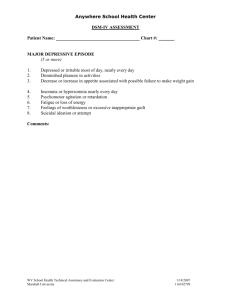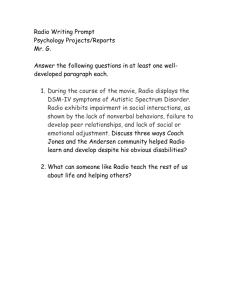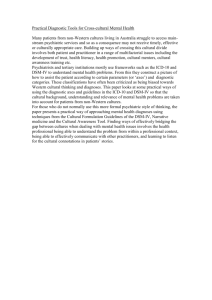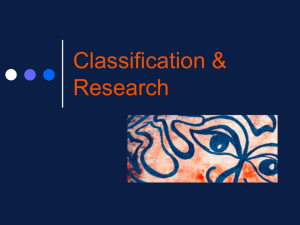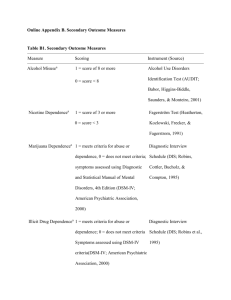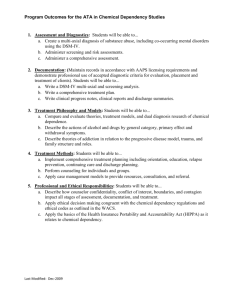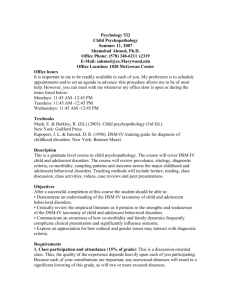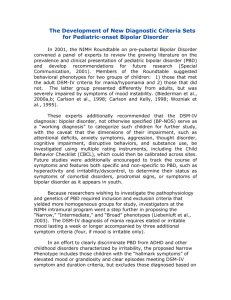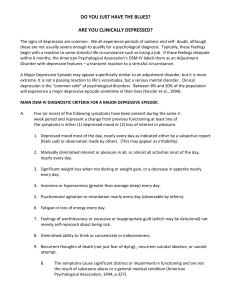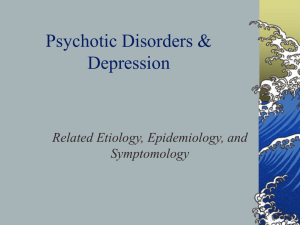Film: A Beautiful Mind
advertisement
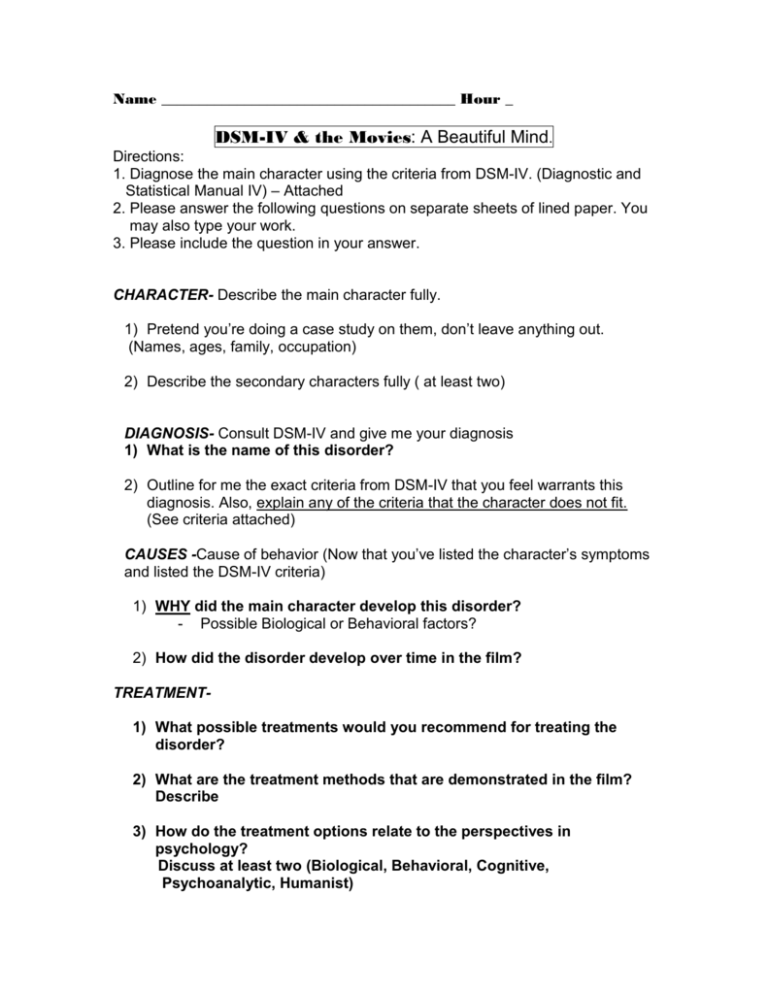
Name _______________________________________ Hour _ DSM-IV & the Movies: A Beautiful Mind. Directions: 1. Diagnose the main character using the criteria from DSM-IV. (Diagnostic and Statistical Manual IV) – Attached 2. Please answer the following questions on separate sheets of lined paper. You may also type your work. 3. Please include the question in your answer. CHARACTER- Describe the main character fully. 1) Pretend you’re doing a case study on them, don’t leave anything out. (Names, ages, family, occupation) 2) Describe the secondary characters fully ( at least two) DIAGNOSIS- Consult DSM-IV and give me your diagnosis 1) What is the name of this disorder? 2) Outline for me the exact criteria from DSM-IV that you feel warrants this diagnosis. Also, explain any of the criteria that the character does not fit. (See criteria attached) CAUSES -Cause of behavior (Now that you’ve listed the character’s symptoms and listed the DSM-IV criteria) 1) WHY did the main character develop this disorder? - Possible Biological or Behavioral factors? 2) How did the disorder develop over time in the film? TREATMENT1) What possible treatments would you recommend for treating the disorder? 2) What are the treatment methods that are demonstrated in the film? Describe 3) How do the treatment options relate to the perspectives in psychology? Discuss at least two (Biological, Behavioral, Cognitive, Psychoanalytic, Humanist) Diagnostic criteria for Schizophrenia (cautionary statement) A. Characteristic symptoms: Two (or more) of the following, each present for a significant portion of time during a 1-month period (or less if successfully treated): (1) delusions (2) hallucinations (3) disorganized speech (e.g., frequent derailment or incoherence) (4) grossly disorganized or catatonic behavior (5) negative symptoms, i.e., affective flattening, alogia, or avolition B. Social/occupational dysfunction: For a significant portion of the time since the onset of the disturbance, one or more major areas of functioning such as work, interpersonal relations, or self-care are markedly below the level achieved prior to the onset (or when the onset is in childhood or adolescence, failure to achieve expected level of interpersonal, academic, or occupational achievement). C. Duration: Continuous signs of the disturbance persist for at least 6 months.
